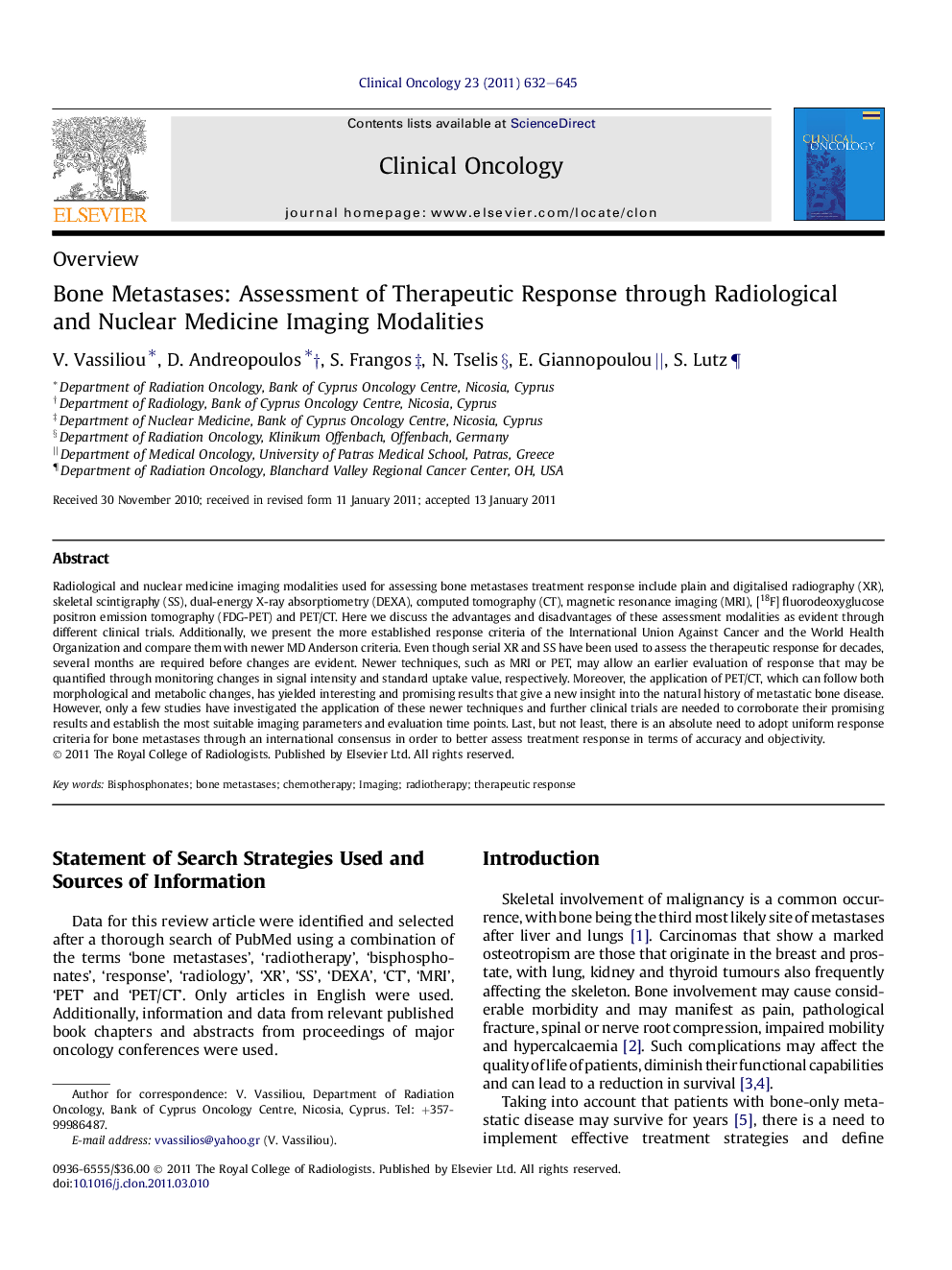| Article ID | Journal | Published Year | Pages | File Type |
|---|---|---|---|---|
| 5698685 | Clinical Oncology | 2011 | 14 Pages |
Abstract
Radiological and nuclear medicine imaging modalities used for assessing bone metastases treatment response include plain and digitalised radiography (XR), skeletal scintigraphy (SS), dual-energy X-ray absorptiometry (DEXA), computed tomography (CT), magnetic resonance imaging (MRI), [18F] fluorodeoxyglucose positron emission tomography (FDG-PET) and PET/CT. Here we discuss the advantages and disadvantages of these assessment modalities as evident through different clinical trials. Additionally, we present the more established response criteria of the International Union Against Cancer and the World Health Organization and compare them with newer MD Anderson criteria. Even though serial XR and SS have been used to assess the therapeutic response for decades, several months are required before changes are evident. Newer techniques, such as MRI or PET, may allow an earlier evaluation of response that may be quantified through monitoring changes in signal intensity and standard uptake value, respectively. Moreover, the application of PET/CT, which can follow both morphological and metabolic changes, has yielded interesting and promising results that give a new insight into the natural history of metastatic bone disease. However, only a few studies have investigated the application of these newer techniques and further clinical trials are needed to corroborate their promising results and establish the most suitable imaging parameters and evaluation time points. Last, but not least, there is an absolute need to adopt uniform response criteria for bone metastases through an international consensus in order to better assess treatment response in terms of accuracy and objectivity.
Related Topics
Health Sciences
Medicine and Dentistry
Oncology
Authors
V. Vassiliou, D. Andreopoulos, S. Frangos, N. Tselis, E. Giannopoulou, S. Lutz,
